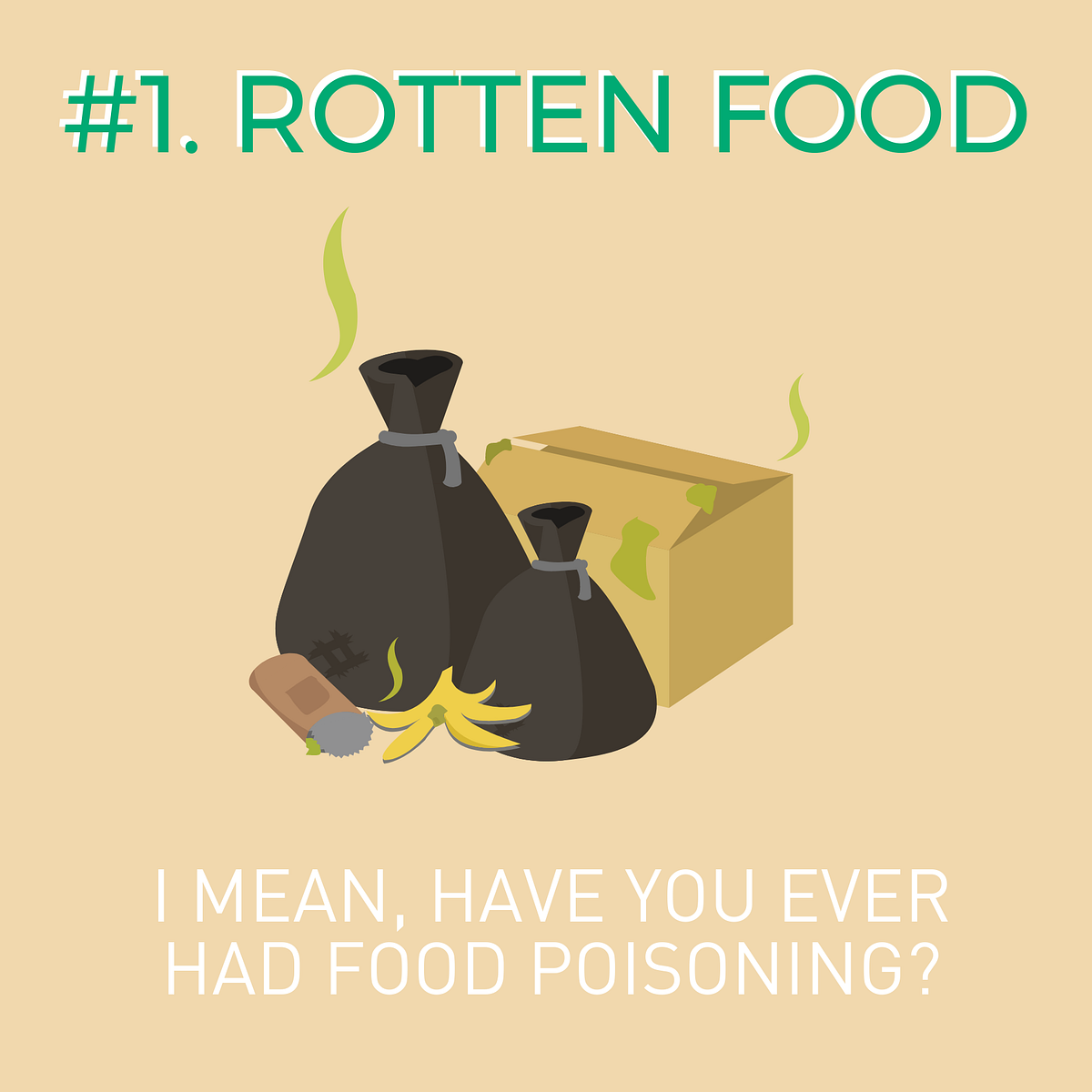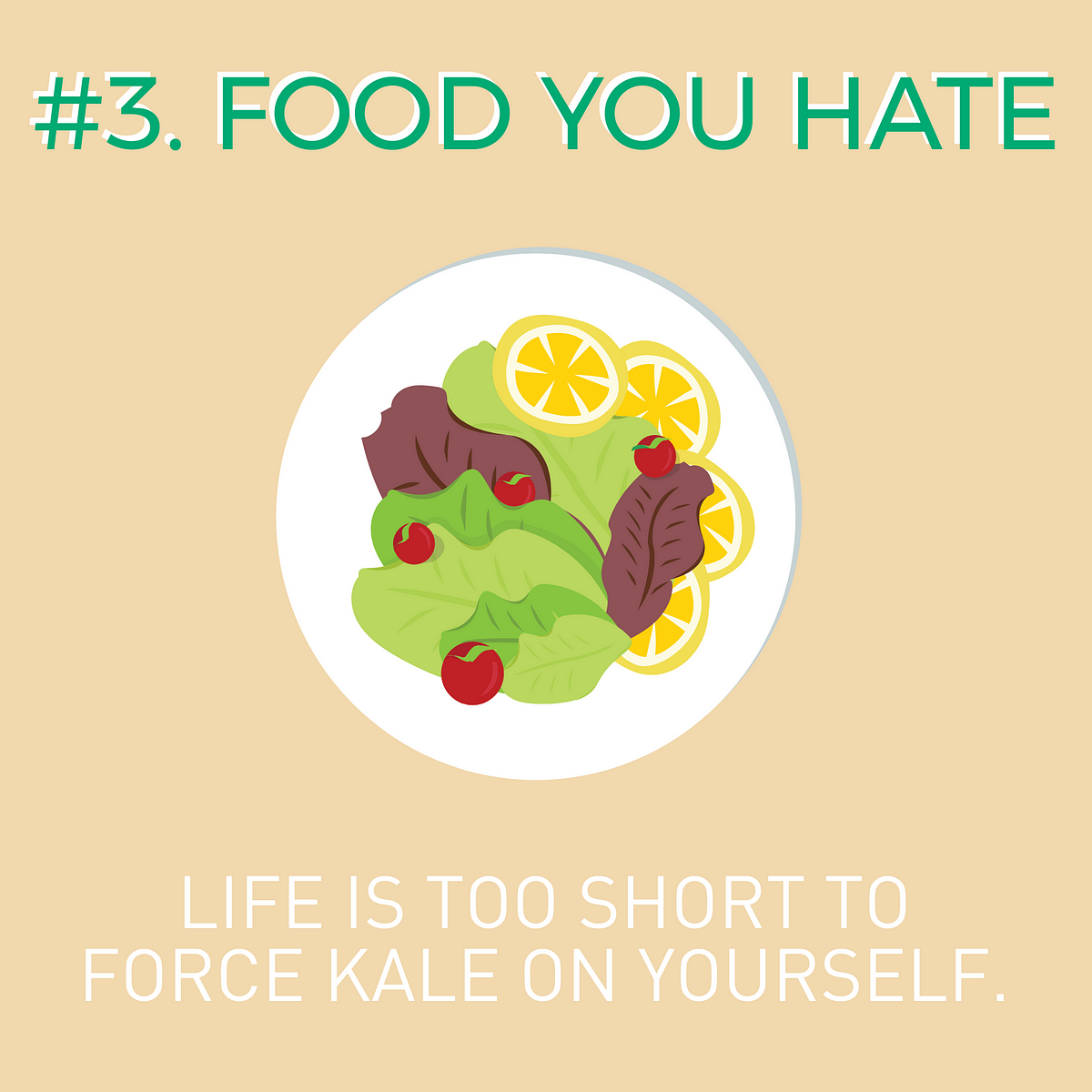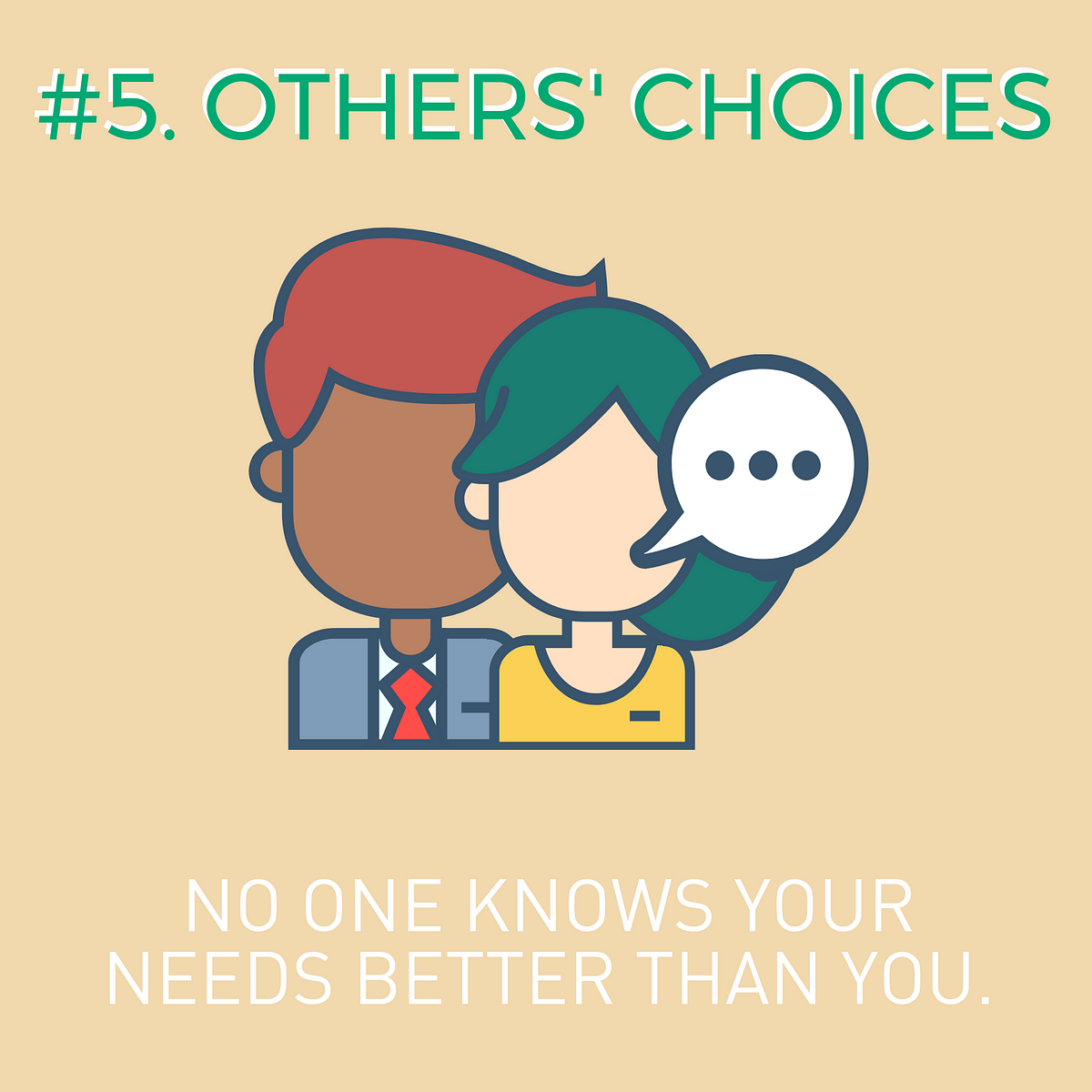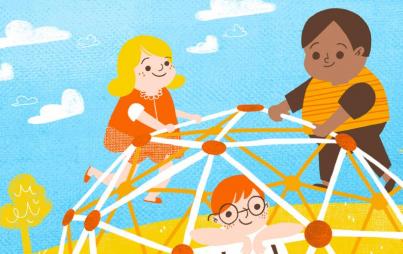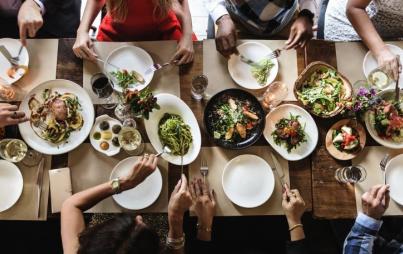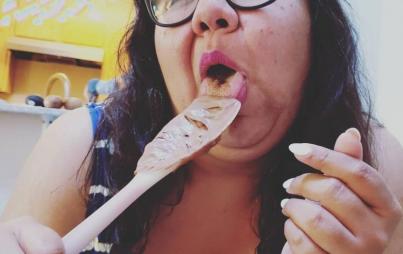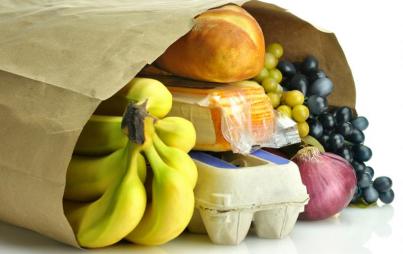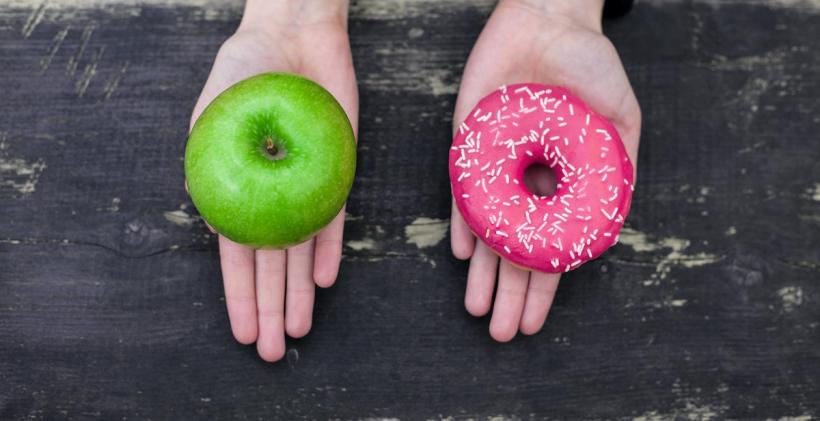
The idea that there are foods that we “shouldn’t” eat comes from the ridiculous idea that we can’t make choices for ourselves.
This article first appeared on Green Mountain at Fox Run and has been republished with permission.
To anyone who has ever surfed the web, this needs no explanation. We’ve all seen it: the advertisement lingering on the righthand side of your browser, the one with the overripe, helpless little banana illustration that frames the handwritten words “5 Foods You Should Never Eat.”
It’s the same one that shows up on your Facebook newsfeed — shared by your innocent, unknowing neighbor or that guy you went to high school with who’s now on a paleo kick. Now not only do you have to shudder at the sight of it as you scroll past, but you also have to see your dear friends showing their support by liking the post (or, as I see it, fallen victim to a fear-driven advertising ploy). Sigh.
I often find myself needing to hold back from texting my friends right away, knowing the confusion that may consume them if the first thing they see in the morning is a notification from me in all caps yelling, “WAIT! THERE’S A BETTER WAY!”
My hope is both personal and professional — that by writing this post, I can let go of the frustration I harbor when I see these ads, and you, the reader, can begin to see the ridiculousness in these advertisements. Besides, the next time you see someone post about how bread is evil or sugar is toxic, you can leave this tongue-in-cheek link in the comments — and really get a conversation started.
1. NEVER EAT ROTTEN FOOD
You should not eat spoiled food. It’s just bad for you!
And you don’t even need to rely merely on expiration dates. Once upon a time, we didn’t even have these handy (but hard to find) dates on things. We relied on our senses — like sight, for example: “Yup, that bread clearly has another life form emerging, so maybe I shouldn’t eat it.”
Another very powerful tool, especially when inspecting things in opaque containers, like expired milk, is your taste buds. That was how we did it way back when, and that is likely why our taste buds are so advanced today.
We would cruise across Mother Earth, stumble upon a food source and taste a teeny, tiny bit of it. Our taste buds would then discern risk versus benefit — pick and a choice would be made to either eat it or leave it for the vultures (fun fact: vultures actually have a much more avant-garde gut than we do — one that can handle rotten stuff no problem).
The Exceptions:
- Probiotic-rich foods, like kimchi and sauerkraut
- Most delicious artisan cheese
- Yummy aged beef
- Lots of soy products, including miso
Rotten food, generally speaking, can cause you a lot of grief. Have you ever had food poisoning? Then you know what I’m talking about.
2. NEVER EAT POISONOUS STUFF
Definitely do not eat anything poisonous! In fact, it could kill you!
Thankfully, most household items that contain poisonous substances are marked with an intimidating skull and crossbones symbol — you know, like you see in cartoons. But again, that little useful tool, just like the expiration date, is a drop in the bucket as far as evolution goes.
Again, thank you, taste buds! Because of those little buggers, we are not only surviving but thriving. Our taste receptors that detect bitter flavors evolved to help us identify toxicity in plants and more. And this important evolutionary adaptation occurred a long, long time ago — like, before the human migration out of Africa!
That’s how important our bodies knew it was to detect poisonous food. In order to survive as a species, we had to develop a way to avoid these toxins — and fast!
You Might Also Like: The Keto Diet (And Other “Fads”) And 6 Reasons You Should Avoid Them
The Exception:
- Fugu — If ever given the chance to try it, do! But it’s not likely you’ll even have the chance because only licensed chefs who are trained in thoroughly removing the poisonous parts are allowed to prepare the dish, and we don’t stumble upon those chefs every day.
Poisonous food is bad news (uh, obviously). And while Poison Control is just a phone call away, it probably makes more sense to just avoid the stuff.
3. NEVER EAT FOODS YOU HATE THE TASTE OF
If you’ve gotten to the point where the food isn’t expired and it doesn’t contain a poison warning, good. Give it a go. But if you start eating it and it’s not enjoyable, then stop eating it. Plain and simple.
Here’s an example: Maybe you go out and get yourself some perfectly good kale and use it in place of your typical go-to, romaine lettuce. Maybe you did this because someone told you that kale is a “super-food,” and you’ve heard so much about it that you want to see about adding it to your routine. But alas, once you try your first bite, you quickly realize that the taste is far from something you find fulfilling and yummy. Maybe you find it too bitter or too rough to chew.
So don’t eat it.
Your taste buds are purposeful — so don’t work against them. Contrary to popular belief, food is not only a biological, nutritional experience. It’s also a pleasurable experience that takes all five of your senses into account and, as such, can help build community between people — hence the saying “breaking bread.”
If something doesn’t taste good to you, your taste buds are letting you know it’s okay to skip it — and to find biological, psychological, and sociocultural value in something else. That’s okay.
The Exception:
Make sure you know what you’re doing with the food — or at least have the fortitude to admit you don’t know what you’re doing so you can seek advice from someone who does (like Julia Child).
As a Food Adventurer (self-proclaimed title), I like to say, “I’ll try anything — three times.”
Which brings me back to the case with kale. The above story is a personal one. The first time I tried it, I thought I hated it because I had no idea how to work with it. You don’t just use kale in place of romaine (unless you actually do and you like it).
So, try to understand the food you’re working with and then prepare it in a way that tastes enjoyable to you. Nowadays, I don’t just chop up kale and throw it in a bowl; I massage it first with some olive oil, lemon, and sea salt since this makes it delicious!
4. NEVER EAT FOODS YOU’RE ALLERGIC OR INTOLERANT TO
I could list off a whole lot of examples here, but dairy comes to mind instantly on this one. Not to demonize dairy in any way — since it’s a perfectly fine food for lots of people. But there are some who just can’t handle it!
A dead giveaway for knowing that you have an allergy or an intolerance is how you feel afterward. If you can see a clear connection between consuming a particular food and how it makes you feel afterward — and that feeling is not a good one –this food might not fit for you.
Regardless of how good it might work for others, it might not be right for you — and that’s okay. Because there isn’t one singular food that contains essential ingredients you can’t find elsewhere.
So, if you’re allergic to seafood, for instance, there are other sources of omega 3 fats. Just like if you are intolerant to dairy, there are other sources of calcium.
The Exception:
The one exception to this rule is when you make an exception to this rule. In other words, you might know full well that you don’t tolerate dairy, but you decide to grab an ice cream anyway. You did a thorough risk versus benefit analysis (by taking a mindful approach) and you chose to eat it. You made the call.
Not sure if the reaction you’re having to something is an allergy? You can always talk to your healthcare practitioner or a medical specialist (like an allergist or a dietitian) about your experience.
5. NEVER EAT FOOD SIMPLY BECAUSE YOU’RE TOLD TO
We have a great class at Green Mountain at Fox Run called “When Is Cake the Best Choice?”
One of the scenarios I use is this: You go out to eat at a restaurant that makes your favorite cheesecake. You had a late lunch, so you aren’t very hungry. You really only want the cheesecake, but instead, you order a healthy entrée first — grilled salmon with a sweet potato and sautéed veggies — and then you order the cheesecake for dessert. You leave the restaurant uncomfortably stuffed.
Think about it: What happened here? What led us to feel uncomfortably full? What did we get stuffed on?
We often lump foods into two categories: the good ones and the bad ones. And as we do this, we believe that if we don’t eat enough of the foods on the good list, we aren’t being morally good. As such, in order to “deserve” the cheesecake, we first eat the food we think we’re “supposed” to. But what would have been the true best choice in this scenario? To follow our body’s craving — and just go ahead and order the cheesecake.
The Exception:
The exception to this rule is if your body is telling you to eat something. That’s right — the only person whose ideas about food you need to listen to are your own. When we reconnect with our bodies and rebuild our intuition around eating, our bodies will talk to us. They’ll tell us what we need. Practice listening.
Don’t recreate someone else’s “good food” list. Make your own. And on it, list the foods that make you feel good. Sometimes that’s going to be a carrot, and sometimes (yes) it’s going to be the cheesecake. That is health-supportive eating — and that’s what we should be striving toward
The idea that there are foods that we “shouldn’t” eat comes from the ridiculous idea that we can’t make choices for ourselves — that our bodies aren’t to be trusted, and so we need someone else to give us rules to live by.
But when we repair our relationships with our bodies and follow their natural intuition, we can rely on our own senses to tell us what we want and don’t want. And that is a powerful reconnection!
Now, hopefully from here on out, we can all chuckle at these advertisements. I know I will.
More From Green Mountain At Fox Run:
-
Weight Loss Diet Schemes Don’t Work — Especially These
-
Mindful Eating: Eating What We Want and Loving the Result
-
6 Tips for Giving Yourself Permission to Eat What You Want

SaveSave



